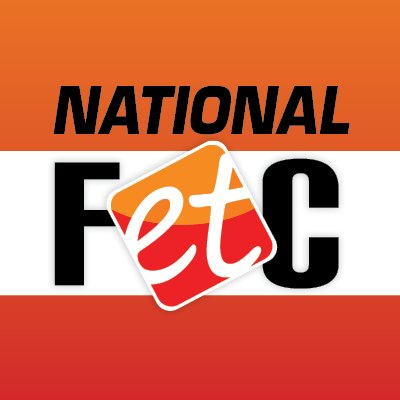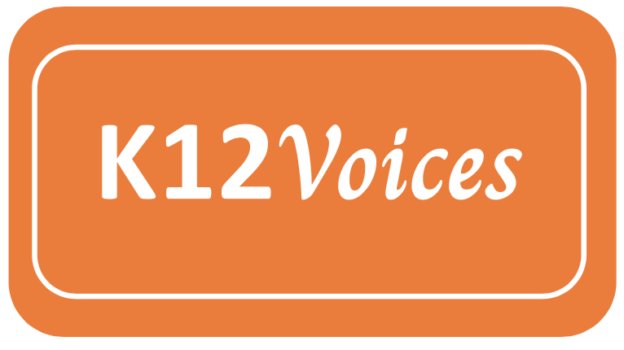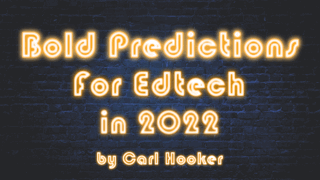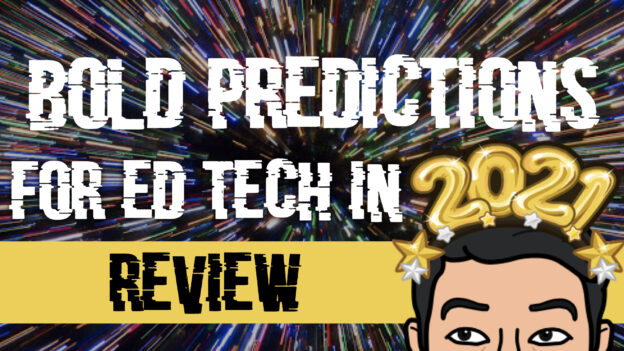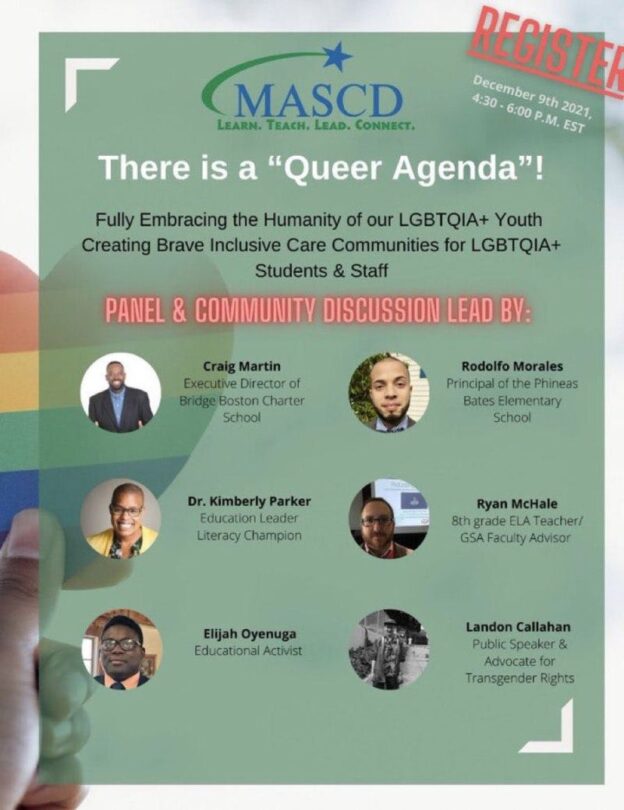Every year I embark on this tradition of trying to be “bold” in my predictions of what the twelve months ahead will entail. Some years I hit the mark, such as in 2015 when I predicted that the state of Texas would end its testing contract with Pearson. Or like in 2019 when I said Netflix would make an EDU version of their platform (ok, that one still hasn’t happened…yet).
Still, it’s fun to make predictions, so with the turning of the calendar and a new year upon us, why not put something out there in writing to see how right or wrong I will be.
The last two years have greatly impacted my predictions more so than any previous time. With the pandemic, industries far and wide are changing behaviors and practices. Having groceries delivered or meeting on a Zoom call are now commonplace.
All of these changes have also impacted education. The course correction in funding with ESSER funds finally gives K-12 schools a chance to balance out what has been a severely underfunded aspect of our society.
But first, a disclaimer. As I mention in the title, these predictions are meant to be BOLD. It’s one thing to say that education will change, but it’s quite another to actually specify the method in which it will change. I also realize that public education is heading into a bit of crisis mode when it comes to staffing shortages and the great resignation.
With that, here are my thoughts on what the year 2022 will hold.
The Great Edtech Buy Out Continues
With the influx in ESSER funds, companies peddling education technology are feeling the pressure to grab a slice of the pie before it’s all gone. Companies consolidate and partner pretty regularly, and recent trends would indicate this will only accelerate this year. Last year Nearpod was bought out for an astounding $450 million by Renaissance. LineWize expanded its offerings by purchasing classroom management and analytics wizard NetRef and adding the UK filtering company Smoothwall.
Doing this gives companies looking for the next big RFP greater coverage to check those boxes and potentially land a large district such as LAUSD or NYC. With the deadline of ESSER funds coming in 2024 (and likely most of those funds allocated by 2023), I predict this year will see a rapid increase in companies joining forces or buying one another. Will they all be owned by Pearson or PowerSchool? I’m not sure, but it wouldn’t surprise me if by the end of this there are only 3 or 4 big-time players in this space.
The Great Resignation Will Force Schools to Think Differently About Online Teachers
We are in the midst of what many are calling the “Great Resignation,” and with the shift to increased remote work, people and companies realize they can do a lot more with less. (Some folks have even realized they can work multiple careers at the same time, like yours truly.) Schools are feeling the pressure from this with both a shortage of substitute teachers and superintendents migrating to retirement at a rapid pace.
One of the biggest obsta犀利士
cles secondary schools face is what can be offered to students in terms of courses. Small districts are limited in offerings based on who is qualified to teach which class. For example, if a group of students wants to take Italian as a foreign language, they have to have a teacher who works physically at the school to be able to offer it. Many school leaders also are burdened by traditional thinking when it comes to hiring, believing a full-time employee is the only way to go. So now you might have a teacher teaching Italian one period per day and then other “catch all” subjects the rest to make up their paycheck.
I predict this year we will see a rise in schools outsourcing course offerings via part-time online instructors. Companies such as ElevateK12 and Rex Academy have already started to realize this, and are providing part-time certified educators to remotely teach some of those hard-to-reach classes. With the shift to 1-to-1 devices, schools will use vacated computer labs to serve as staging ground for students still attending class in-person. Alternatively, students can take a “zero hour” course while at home on their own time, much like you would take a Master Class online.
A New Social Media Platform for Educators Arises
With the increased pressure in education and the lack of social connection due to the pandemic, the outlook on our industry is pretty bleak. Educators need to connect more so now than ever to solve our ever-increasing issues. The only problem is, we are scattered everywhere on social media. Twitter, TikTok, Facebook Groups, Instagram, etc. – these platforms connect us but only in platform-based silos.
Last week I announced the launch of a new social network that I’ve been working on with a group of forward-thinking and compassionate educators for the last several months. The goal behind K12Leaders.com is to provide a free platform for educators to connect, grow, share and learn. While this platform is still very much in beta (you can try it out here), our hope is that this becomes a tool for reversing the trend of educators leaving the profession. This is literally a professional learning network and something I think we’ve sorely needed in education.
Ok, so as this is a bold predictions article, time to be bold. As of this writing we have 145 members and my bold prediction is that we’ll be at 10,000 come December 31, 2022.
TikTok University Will Launch
Those clever dances. Those funny little reaction videos. The insane challenges. Kids (and adults) love TikTok. (I even broke down and finally joined this year too) It’s now the second-most used social media site by teenagers (after YouTube). Much like YouTube, people are drawn to this tool for both entertainment and information. My prediction is that this year we will see the launch of what I’m calling TikTok University or TikTokU for short.
This education-friendly version of the popular social media platform will feature teacher influencers rapping to the times tables or dancing on the periodic table. (Yes, I said “on.”) Just like TeachersPayTeachers, TikTokU will be a great source of additional revenue for underpaid educators while also keeping students engaged and inspired.
Now if only the next big TikTok challenge would be to surprise your teacher with a coffee instead of destroying the school restroom….
ISTE22 Will Feel Like A High School Reunion
A lot has happened since the last in-person ISTE in Philadelphia in 2019. Jobs have changed. People have gained and lost weight. Educators have gone three years without being able to network and connect in person. And now we are all going to be together for the first time in a long time in America’s most epic party city, New Orleans.
What could go wrong?
For the last three years we’ve experienced online happy hours and virtual conferences, but coming this summer that all ends (fingers crossed considering the current pandemic trends). As someone who’s been at a couple of major state conferences in the past month, I can tell you the release of pressure is real. Educators need to mix and network with like-minded souls and catch up on old times. We are in the people business and not being around our PLN has really drained us emotionally and mentally. I for one am excited to see the spectacle…er…magical experience that awaits us in The Big Easy.
An Amazon “Alexa” Academy Will Be Established
Do I think teachers will be replaced by robots? No. Do I think some of our time spent teaching basic facts should change? Absolutely. We are facing a “time famine” in schools yet we still focus much of our day and energy addressing basic facts that our phones or digital assistants can answer. Instead, we should be spending time helping kids ask critical thinking questions and taking risks.
What better way to demonstrate that than by using artificial intelligence in the classroom? With AI, teachers can demonstrate how to get Alexa to listen to you when you want to hear that next great Doja Cat song, or how Google Home can help you figure out what the square root of pi is.
My prediction is that Amazon will take the lead on this and attempt to implement the first-ever “Alexa Academy.” Teacher facilitators in the classrooms can help students ask questions, but the room will be outfitted with one-to-one Amazon Echo Dots.
I would recommend for those seriously considering this that for the education addition, each Echo should be given a personalized “wake” word so the Echos don’t get confused. I’m sorry, could you repeat that again? I’m having trouble understanding you….
A New Digital Divide Emerges
The gap between those with and without access in schools has rapidly narrowed. The digital divide is still a real thing, but now I’m seeing other trends when it comes to technology use in schools, particularly when it comes to academic support. Underserved communities traditionally use edtech as remediation and repetition practice of core academic areas. Meanwhile, affluent districts promote project-based activities and entrepreneurial classes that employ edtech more creatively.
I wrote a more extended thought piece on this phenomenon recently when reviewing how schools support students struggling academically. With 20% of ESSER funds earmarked for “learning loss,” it’s natural for edtech to play a role in this recovery.
I think this year we will see a new digital divide emerge in terms of how we are using edtech. The truth is this isn’t a new phenomenon, however, now that we are closer to ubiquitous access we will start to see some gaps widening being the haves and have nots.
Augmented Reality Will Push the Need for NFT Education
We’ve all enjoyed playing with our Merge cubes and watching fun little videos using HP Reveal (now defunct), but generally augmented reality (AR) has been largely a consumptive edtech tool, which is why many companies have come and gone when it comes to implementing AR in the classroom (remember Aurasma?) The other major roadblock for AR is that it has been limited to those with iOS or Android devices.
These challenges have kept AR off on the sidelines and saved for those special “Fun Friday” classroom activities. Now with companies such as Australian-based Eyejack and its AR Academy, I predict AR will finally start to shift to the creative side of education. Eyejack even recently became available on platforms such as Chromebooks, giving students another method to create and express themselves. This shift toward device-agnostic use of AR removes one more barrier for what I see will be a major new creative outlet for kids.
The interesting thing about creating in the AR space is that now students can actually sell their virtual creations as non-fungible tokens (NFTs). The conversation around intellectual property and creativity should be happening in schools yesterday. Making creative overlays, virtual murals, and living posters means an exciting future possibility for how kids demonstrate their learning (and possibly earn a few bucks as well).
Metaverse Will Be a Not-So-Fun Version of Ready Player One.
The book (and movie) Ready Player One gave us a preview of what this new idea known as “The Metaverse” might look like. Amazing avatars interacting in cool zero-gravity dance clubs and races through New York City with monster trucks were just the periphery, but at the heart of the book was how education was now freely accessible to all with a VR headset.
Companies are now scrambling to throw their energy and money into building this Metaverse (see graphic below) but will it really be like the book? Will I be able to fly on a luck dragon or play some classic Commodore 64 games in a virtual representation of my childhood home?
I think the short-term experience will be a little clunky and not nearly as fun, however, the potential for what the Metaverse can bring to schools could finally change the face of education. This could potentially create another digital divide when it comes with headsets, and raise concerns for screen-time warriors, but I, for one, am all in. Now, does anyone know a good real estate agent on the Metaverse? I don’t necessarily need a house next to Snoop Dogg, but just some nice digital acreage.

My New Book Will Be a Success Because of Failure
Every year I predict I’ll write some sort of book. Almost every year that prediction fails. This year is an exception as I just finished my latest book Ready Set FAIL!, which is set to launch in late January 2022 (pre-order here!). This book embodies much of what I believe we need more of in education…failure. I have always taken risks in my life that I think have had a positive impact on either my own learning or that of others. This was not something that was nurtured during my own experience as a student in K-12 or even at higher education institutions.
Just writing this book and having it published is a success in my world (shout out to XFactorEDU publishing for taking a chance on me). We are not going to survive as an institution of learning unless we start making great strides in using risk-taking and failure to help unlock creativity in our students (and adults). My prediction (and hope) is this book will motivate some schools to rethink the traditional method in which we deliver learning to our students.
Speaking of failures, I’m excited to see how many of these predictions will come true in the coming year. Like the Netflix series Black Mirror, all of these seem plausible, if not possible, with the right motivation and creative risk-takers in our space. The future is bright and uncertain all at same time. After all, who could have predicted a global pandemic would bring about a change to our daily lives? That’s one bold prediction I failed to make, and I’m okay with that.
Happy 2022 everyone…here’s to the future!
